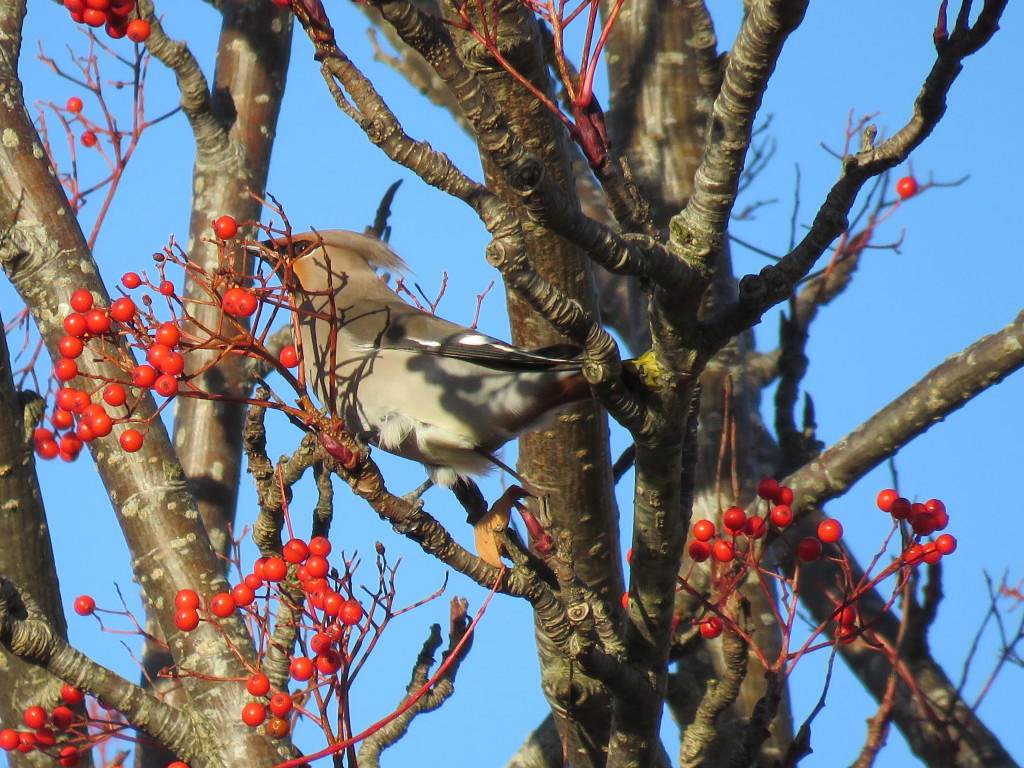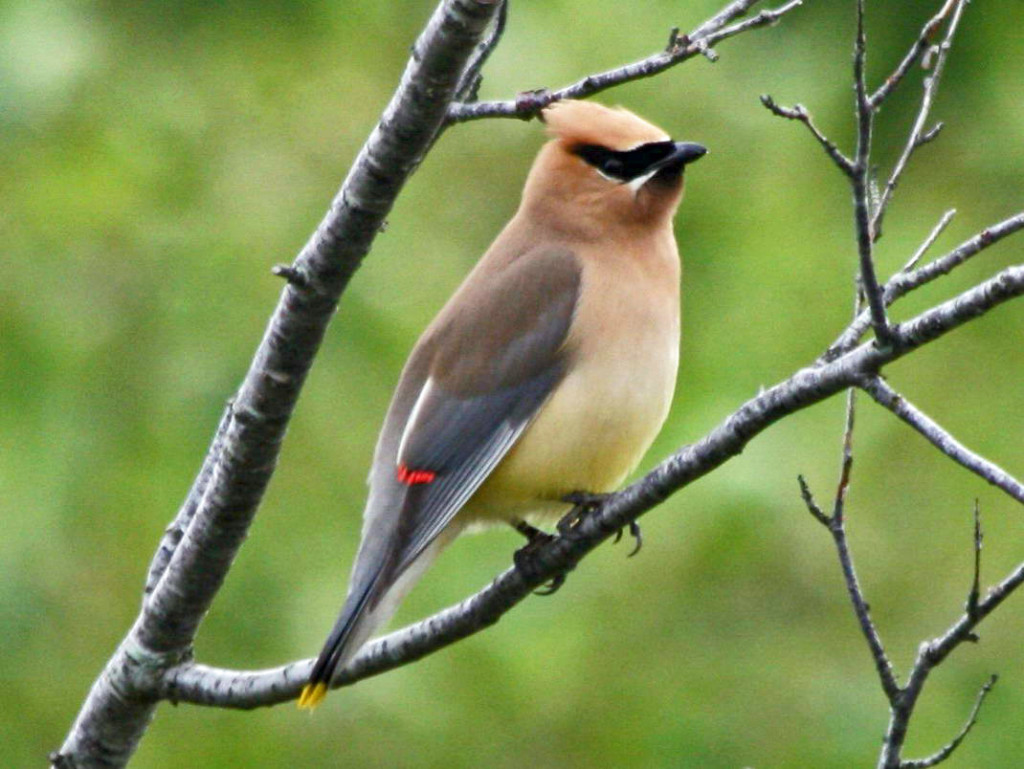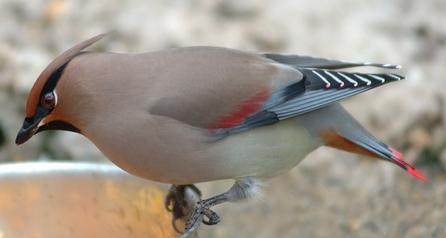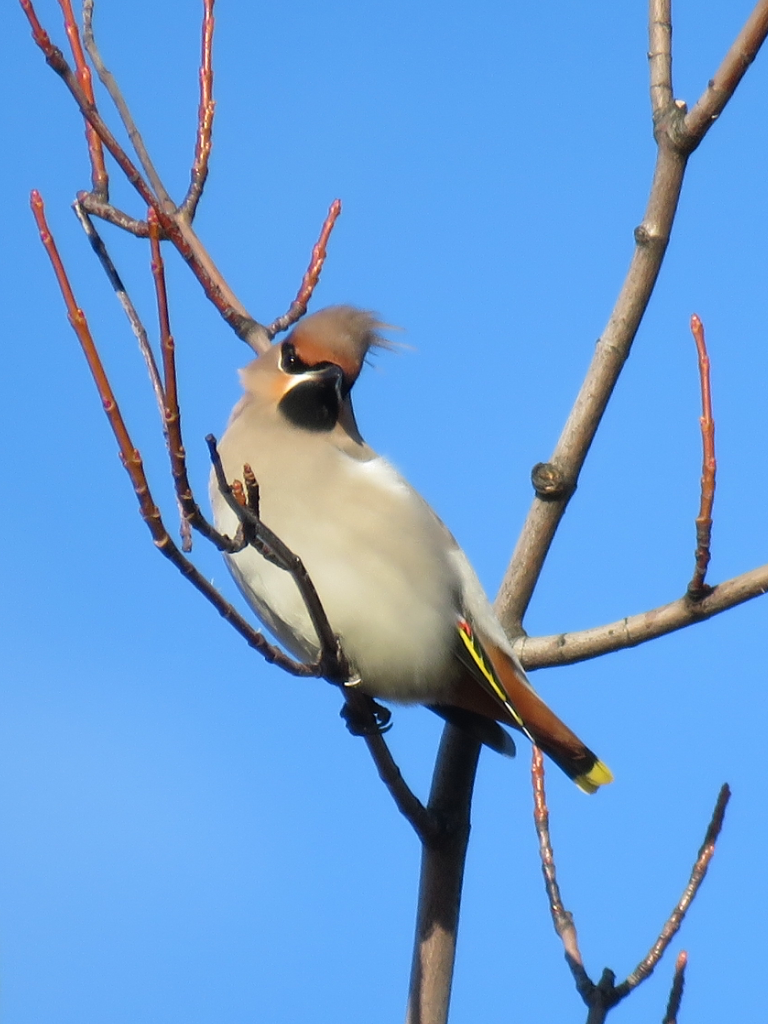What I missed while I was home
Almost every time, when I am on holiday, I feel like I miss something, while I am not in the Visitor Centre. It was the same in the beginning of November, when I was lucky enough to spend a week in my home country. As soon as I opened my computer after my arrival home, I saw that colleagues from the basin were talking about the first sightings of waxwings.

Waxwings are winter visitors in the UK. They arrive first to the east coast of the country from Scandinavia, and usually move inland as food is getting scarce. They feed on rowan, hawthorn or cotoneaster berries, and can quickly strip a tree. If these berries are fermented enough, they can also get intoxicated!
They start to return from the wintering grounds in February or March and nest mainly from mid June to July. During courtship, the male will pass a small item; usually a berry to the female and then she will pass it back to him. After that they continue to pass this berry back and forth a few times.

There are three species of waxwings; the Bohemian waxwing, the Japanese waxwing and the cedar waxwing. In the UK, it is most likely to see the Bohemian waxwing. Bohemian waxwings are around 20 cm in length and reddish-brown in colour. They have a very distinctive head crests and yellow-tipped tails. Their wing has black, white and red markings; they also got their name from their red wingtips, which look like sealing wax. On the head you can see black mask shapes around their eyes and a black throat underneath. Their wing shape is triangular, so they can be easily mistaken for starlings.

The Japanese waxwing breeds in coniferous forests in Russia and in north-east China. They lack the row of waxy red feather-tips on the wing. Another difference is that they have reddish-brown stripe across the wing. The third species, Cedar waxwings are a native of North and Central America and are smaller and browner than the Bohemian waxwings with a yellow belly. Their under tail is white, whereas Bohemian waxwings have an orange under tail.

In Montrose, there are several places to see the waxwings. On my route to work, I pass a few Rowan trees but I only saw that the waxwings were there (one of the trees was completely stripped). I have not seen them yet, I hope that next time I will be luckier.
Noémi Menczelesz – Volunteer Visitor Centre Assistant, European Voluntary Service.
Help protect Scotland’s wildlife
Our work to save Scotland’s wildlife is made possible thanks to the generosity of our members and supporters.
Join today from just £3 a month to help protect the species you love.
Preface
Almost every time, when I am on holiday, I feel like I miss something, while I am not in the Visitor Centre. It was the same in the beginning of …
